Getting out of the city for a drive along Highway 8 in southern Ontario is always a pleasure. I look forward to seeing red barns and lush cornfields, reminding me that if it wasn’t for the 19th-century Industrial Revolution, we might all still be farmers tilling the land. I expected the corn to be at least knee-high by this time in June, but some fields had plants up only a few inches, and many acres were still unplanted. The excessively rainy spring made it impossible to get the fields drained and corn planted on time.
If you’ve ever grown corn, you know it stirs a warm sentiment in gardeners. My grandfather was from Iowa, the heart of corn country. After he came east, he was never without a vegetable garden and a patch of ‘Seneca Chief’ corn (currently listed in the Seeds of Diversity heritage plants database). Corn was the crop he fretted over, listening to radio weather reports, and watching the skies to make his own predictions. The growth of corn was the calendar of our days, dividing the summer into planting, waiting and harvesting. When it was finally mature, he stood in the corn rows that ran alongside the driveway, watching the kitchen window for my grandmother to appear and shout down that the pot was boiling, and then he picked the first ears. That corn lives in memory for its rich flavour and delicate sweetness; or expressed more correctly, a balance of starch providing flavour and sugar contributing sweetness.
Seed for ‘Seneca Chief’ corn is still available, though infrequently found in seed catalogues. It’s a normal sugary hybrid, containing a sugar gene (referred to as SU), contributing sweetness that converts rapidly to starch after harvest. Corn with the SU gene has full flavour for only a day, after which much of the sugar is converted to starch. It’s still possible to find these old-fashioned corn varieties through seed banks and exchanges, and some like ‘Seneca Horizon’, ‘Golden Bantam’, ‘Silver Queen’ and ‘Quickie’ are in seed catalogues we’re familiar with.
If you look for home garden corn seed in catalogues, you’ll notice there are seed categories designated with new abbreviations. Plant breeders have designed new corn cultivars by inserting sugar genes with longer lasting sweetness to allow refrigerated storage (and shipment for commercial growers) after harvest without sugar loss.
Sugar enhanced corn (referred to as SE and SE+), such as ‘Bon Appetit’, ‘Luscious’ and ‘Spring Treat’, have varying degrees of increased tenderness and sweetness. Supersweet corn (SH2, meaning shrunken), like ‘Obsession’, ‘Optimum’ and ‘Passion’, have greatly heightened sugar content with decreased starch and tenderness, and stay sweet for several weeks after harvest. The SH2 corn is most often what you’ll find in supermarkets. These seeds lack the starch to plump up the seed kernels, and the harvested kernel tissues are thicker, resulting in chewy corn. The flavour balance in supersweet corn is so heavily weighted to sugar that some gardeners think the corn flavour is obscured.
Finally, there is synergistic corn (which has no abbreviation), combining the tenderness of SE and the high sugar content of SH2. These combined gene synergistic corns might be the best bet for lasting flavour and tenderness. Synergistic corns available in seed catalogues include ‘Honey Select’, ‘Frisky’, ‘Polka’, ‘Montauk’, ‘Nantasket’, and ‘Applause’. (By the way, there’s no sweetness advantage between yellow and white kernels.)
Okay, now I understand the corn categories in seed catalogues, but I still wish my favourite — the ‘Seneca Chief’ my grandfather grew — was more frequently available.

Girdling root heartbreak
This has been a season of rain and high winds, it was just a matter of time before something woody was blown down. With all the large and elderly trees in my garden, I wasn’t expecting to have a relatively new, eight-foot (2.5-m)-tall false cypress (Chamaecyparis nootkatensis ‘Glauca’, sometimes listed as Xanthocyparis nootkatensis ‘Glauca’) damaged, but that just shows the limits of my imagination. A big wind blew through here last week, wrapped itself around this lovely tree, and pulled it right out of the ground. I found it laying across the front walkway, with its roots out of the soil.
It was a young and exceptionally flexible specimen, and it made no sense that the root ball would be lifted right out of the hole. However, upon closer examination I could see how this happened. Two-thirds of the root ball was encircled by a thick, woody, girdled root that had never developed a hold in the hole. A root girdles, or begins circling the inner wall of a plant container, when it has been in the container too long. It should have been moved into a larger pot long before I bought it, and could have made healthy root growth before being transplanted into my garden. (I remember where I purchased this plant, and will say something to them.)
But I don’t mean to shift the blame. The roots of newly purchased perennials, shrubs and trees should always be examined before planting. Teasing the roots out a bit, and fluffing up the compressed sides of the root ball may reveal girdled or compressed roots that won’t be able to extend into their new holes. If you don’t want to risk watching a valuable plant decline (or find it laying across the front path), make sure you massage those root balls and free up congested root masses before planting. I certainly learned my lesson.

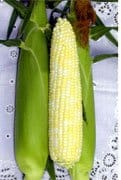


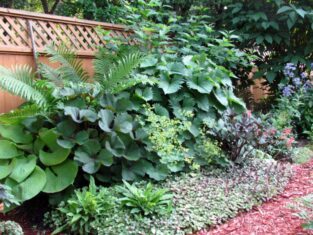
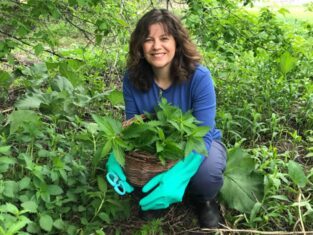
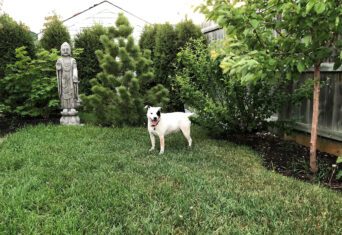
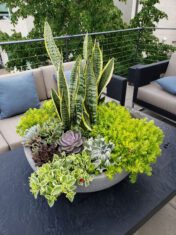


Hi Lynne (June 22)
This sounds like a serious case of girdled roots. Honestly, the plant should be returned to the place you purchased it. I can’t think of anything more you could do to encourage the roots to relax. Certainly a root girdled so badly will shorten the life of the tree, and there are predictable problems ahead if it’s planted your garden. Sorry the news is bad, but you will be more successful with a replacement.
Jennifer (June 22)
I’m glad to know you’re following these blog entries — I like to hear from other gardeners with their own experiences to share! Yes, more information about tree planting would be useful, especially as adequate planting is crucial to the future growth of a tree. There are many opinions on hole and soil preparation. I wouldn’t want to say my own planting practices are the final word, but I do follow a common sense approach. Most trees seem to grow best in a heavy loam soil mix, with approximately 70 per cent dark, rich clay soil (from the site), and 30 per cent shredded or small leaves and coarse builder’s sand. This seems to provide enough nutrients, oxygen and moisture to invite strong root anchoring. If the planting area has poor soil quality — dense compacted soil that’s water-saturated in spring, and then hard-baked dry in summer — it’s not a good site for woody plants without extensive soil renovation. Staking trees should be a temporary practice, only for the first season or two, until roots are anchored in the ground. The stake needs to be at least six inches (15 cm) away from the tree trunk, and ties of soft material should be left quite loose to allow some movement with wind. Small trees under eight feet (2.5 m) at planting seldom require staking. Hope that information is useful, and yes, I’m thinking more about wisteria.
Hello Judith Adam I am enjoying Making a Garden and was very interested in the tree girdling notes. In recent years there has been quite a change in the advice re planting trees, not enriching the soil, making a site rather than a hole and leaving the base of same firm- also getting the tree ties, if necessary, quite low on the trunk and leaving a little play for the tree to sway. Also no mulch ‘volcanoes’ which cut off the trunk root junction from the air exchange it needs. This would be a helpful article if you could write it. Also a piece on pruning wisteria and what can be done to encourage flowering. Looking forward to the next column and of course my mag. JW
Do you have any tips on how to unravel the roots of a container grown tree? I recently purchased a weeping pea shrub standard. The roots were wound so tightly that I could not free them without severing the thickest roots in spite of soaking in water and teasing.